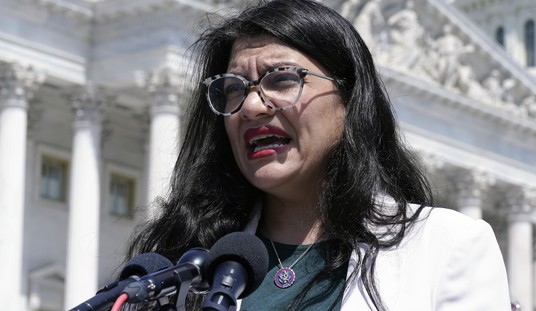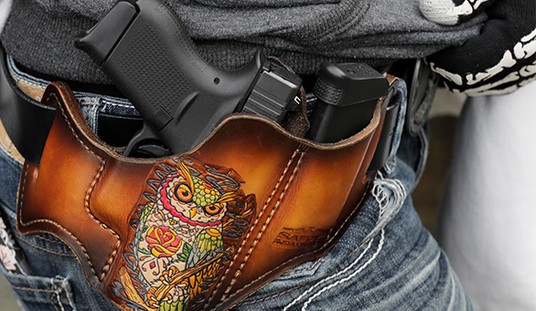 “God is not on the side of the big battalions, but on the side of those who shoot
“God is not on the side of the big battalions, but on the side of those who shoot
best.”—Voltaire
Military pundits and correspondents often talk of the global war on terrorism in terms of high-tech weaponry, Predator missile strikes or improvised explosive devices. But for Marine infantrymen, with boots on the ground, it still is about combat shooting with rifles, pistols or shotguns, or as the Royal Marines put it, shooting “as accurate as you need to be, as fast as you can.”
While combat shooting isn’t rocket science, highly developed skills come into play that allow life or bring death to those on the battlefield. They are skills that are not hardwired into the human genome—they must be learned.
Home-based at Weapons Training Battalion, Marine Corps Base Quantico, Va., the U.S. Marine Corps Combat Shooting Team, the latest addition to the Marine Corps shooting teams, completes the triad of the Corps’ competitive shooting program.
The team’s brand of marksmanship adds realism and hones practical skills needed by leathernecks burdened under the accoutrements of war across a broad spectrum of tactical situations. Situations that can take a rifleman from close-in firefights in built-up areas to shootouts across 200 meters of rugged terrain, to laying sights and less than four ounces of lead on enemy combatants barely visible on distant ridgelines.
The 10-man team has been making itself and its style of shooting known and still is on a shooting high from its recent competition at the Royal Marines Skill at Small Arms Meeting 2010 in the United Kingdom, Sept. 6-15, at Altcar Range, Hightown near Liverpool.
Heavy winds and English rain added to the challenge as Marine Corps team members quickly adapted to firing two European- manufactured weapons they had never fired: the SA-80 (Small Arms for the 1980s) Enfield assault rifle and the SIG
Sauer (Schweizerische Industrie Gesellschaft) 9 mm P226 pistol. The Marine Combat Shooting Team, nonetheless, handily won the match, outshooting eight British military teams by more than 1,000 points.
The shooters included team captain Staff Sergeant Nestor Cruz; the Combat Shooting Team’s staff noncommissioned officer in charge, Gunnery Sergeant Joshua Peterson; staff NCOIC of the Marine Corps Shooting Team, SSgt Ysac Perez; the instructor⁄competitive shooter for the CST, Sergeant James Gill; Sgt Neill Mathews; Sgt Billy Getscher; Sgt Michael Stahl; Sgt William Hiett; Corporal Joshua Martin; and Marine Corps Shooting Team officer in charge, Captain Caleb Wells.
Individual and team efforts paid off, as “Gunnery Sergeant Joshua Peterson, Captain Wells and Sergeant Gill finished in the top 10 percent, winning first, third and seventh places [respectively] in overall shooting,” said SSgt Cruz.
The Marines were prepared for the competition and trained specifically in combat oriented firing with the rifle and pistol. In a September 2010 interview with MCB Quantico correspondent Cpl Christopher Duncan, SSgt Cruz explained that in combat shooting competition, “there is a lot of ‘closing with and destroying the enemy’ from the 300-, 200- and 100-yard lines” with rifles, and five to 27 yards with pistols. “This is a combat shooting style competition; not a static range like Marines are accustomed to shooting for competition.”
They fired on four different targets too: a full body model, large torso model, small torso model and a head model with each shooter firing 700 rounds of rifle and pistol ammunition.
Because the contest was combat-oriented, competitors were required to wear a modified combat load. SSgt Ysac Perez told Duncan that each shooter had to wear the upper body armor with the small arms protective inserts, their helmet and an “extra 20 pounds to simulate a full combat load.”
“The Brits have modified the [match] course based on what they’ve seen in Afghanistan,” said CaptWells. “Basically, it was a close with and destroy course. You see an enemy, close with and destroy him, and move on to targets at 100 to 200 yards and engage the targets again from certain positions.”
The course is considered an effective and practical test of shooting skills under combat conditions.
One of the challenges required competitors to grab a stretcher loaded with 250 pounds, carry the stretcher a quarter of a mile on the run, then individually load a magazine with 10 rounds, then carry a full ammunition can back a quarter of a mile and engage the targets.
Wells pointed out that firing when totally exhausted changes one’s shooting style. It becomes more difficult “settling your sights, and still having that proper trigger control and getting those rounds on target. You understand that when you sprint and you’ve got a big pulse rate and you are trying to keep the sight steady.
“You may be shooting left and have to make sure you aim a little right. I had to hold my breath and try to fire multiple shots,” said Wells. “You have to make yourself breathe a certain way so your sights will remain steady. That’s what these competitions can train you to do.”
There is a vast difference between breaking paper in the “V” ring of targets firing from marked, known distances and the reflexes required in all-weather shooting from under helmet, while gasping air between squad or fire team rushes and holding the sights on a moving target.
“Every shooter is different—the way they hold, the way they squeeze. It is not easy,” said SSgt Cruz.
It wasn’t designed to be. British Army CPT S.A. Jones, match director, explained to the competitors: Every shot fired in the British competition was designed in conjunction with “Lessons Identified” from past operations. “Why do we need ‘skill at- arms’? Lethality with a rifle from [the] maximum effective range down to close quarters. We shoot to kill. It is your duty to be skilled with our weapons; you have no other duty comparable to it.
“Military competition shooting improves our skills. Competing against other professional soldiers pushes us to excel far beyond the accepted standards and drives up our skills until they are limited only by the capabilities of the weapon system. By training hard and succeeding at these shoots, you increase your own skill level, and your confidence in yourself will increase.”
 For the U.S. Marine Corps, such matches may be the first rounds fired in a more realistic and combat-oriented U.S. Marine Corps Marksmanship Program that will be discussed in the near future.
For the U.S. Marine Corps, such matches may be the first rounds fired in a more realistic and combat-oriented U.S. Marine Corps Marksmanship Program that will be discussed in the near future.
A 2009 marksmanship study, “Battlefield Standards for Marksmanship and the Training Implications,” sponsored by the Operations Analysis Division, Marine Corps Combat Development Command, Quantico, Va., reported that the Corps’ marksmanship program is “plagued by inadequate oversight, decrepit ranges and insufficient live-fire training.” Marines say that’s perhaps somewhat overstated, however, many of the Corps’ ranges do need updating and there’s a general consensus that marksmanship training needs to be re-emphasized and reinforced.
The premise of “every Marine a rifleman” remains sacrosanct in the Marine Corps. Initial training on the Known Distance (KD) courses during boot camp, and The Basic School for officers, is the shooting foundation that caused Army General John J. “Black Jack” Pershing, with begrudging admiration in 1918, to state: “The deadliest weapon in the world is a Marine and his rifle!”
Does the raison d’être praise from an Army general in World War I France hold up in the firefights of Afghanistan today? The Corps’ best shooters worry that when accuracy has again become paramount on the battlefield, marksmanship training in the Corps has become a “check in the box,” something that has to be done annually or prior to a combat deployment.
Members of the Marine Corps Combat Shooting Team believe they may hold part of the solution. They see combat shooting matches as a way to further introduce and eventually ensure combat shooting enters the training syllabus of Marine units. It would not be a replacement, but rather follow-on to the KD course. Just as the annual division rifle and pistol matches identify the Corps’ best shooters, and also teach proper shooting techniques that can be passed along to Marines throughout the Corps, combat shooting competition can become an essential part of the Marine Corps shooting program.
The team initially envisions once-a-year combat shooting matches similar to those in England, to be held at the major leatherneck installations of MCBs Camp Lejeune, N.C., and Camp Pendleton, Calif. And combat shooting can be incorporated beyond matches into regular training.
“The best part about this is we can utilize what we already have out there to implement this type of training,” said Capt Wells. Aside from holding a match, Wells also believes time for training is based on how much a unit commander wants to do and can afford to do. If the commander has the Marines and training time, he can have a shooting team or only a fire team. Nonetheless, those Marines learn skills they can take back and incorporate. “We cannot only hold the competition, but introduce this style of shooting to your battalion.
“It is the wave of the future. You can’t only do the KD course. We are trying to introduce our style of combat marksmanship and then advance into the infantry tactics and then intertwine the two, so when you go to combat, you are already familiar with the different firing—the transition firing from a level plane to a higher elevation.”
Gunnery Sergeant Peterson, who’s been competitively combat shooting since 2006, between tours in Iraq and Afghanistan, said, “The competition adds stress and it adds fatigue.” Combat Shooting Team members say such shooting can give deploying Marines more advanced shooting ability and the knowledge necessary to put rounds on target while under the physical and mental stress of combat.
While combat shooting is physically challenging, there’s also a high degree of satisfaction.
“Anybody who shoots this is going to want to shoot it more,” say members of the team. “Once the word gets out about this team and the matches we put on, any infantry Marine will say, ‘Hey, I want to shoot hundreds of rounds in one match.’ ”
Team members emphasize that Marines like this type of shooting; they can see where their rounds are going. It’s up to the Marine to decide how fast he’s going to shoot and what targets he’s going to shoot. He may engage a target 30 yards away and all of a sudden have to make a shot at 500 yards.
One team shooter said: “The only thing missing is the targets don’t shoot back. You can’t practice every scenario in combat shooting. All you can practice is mentally preparing yourself.”
Photos courtesy of Royal Marines.
Reprinted with permission from and copyright retained by Marine Corps Gazette. Please visit http://www.mca-marines.org/gazette
Editor’s Note: You can support Marines through the Marine Corps Association. Call toll free 866-622-1775 and tell them Guns & Patriots sent you. ~Mike P.








Join the conversation as a VIP Member